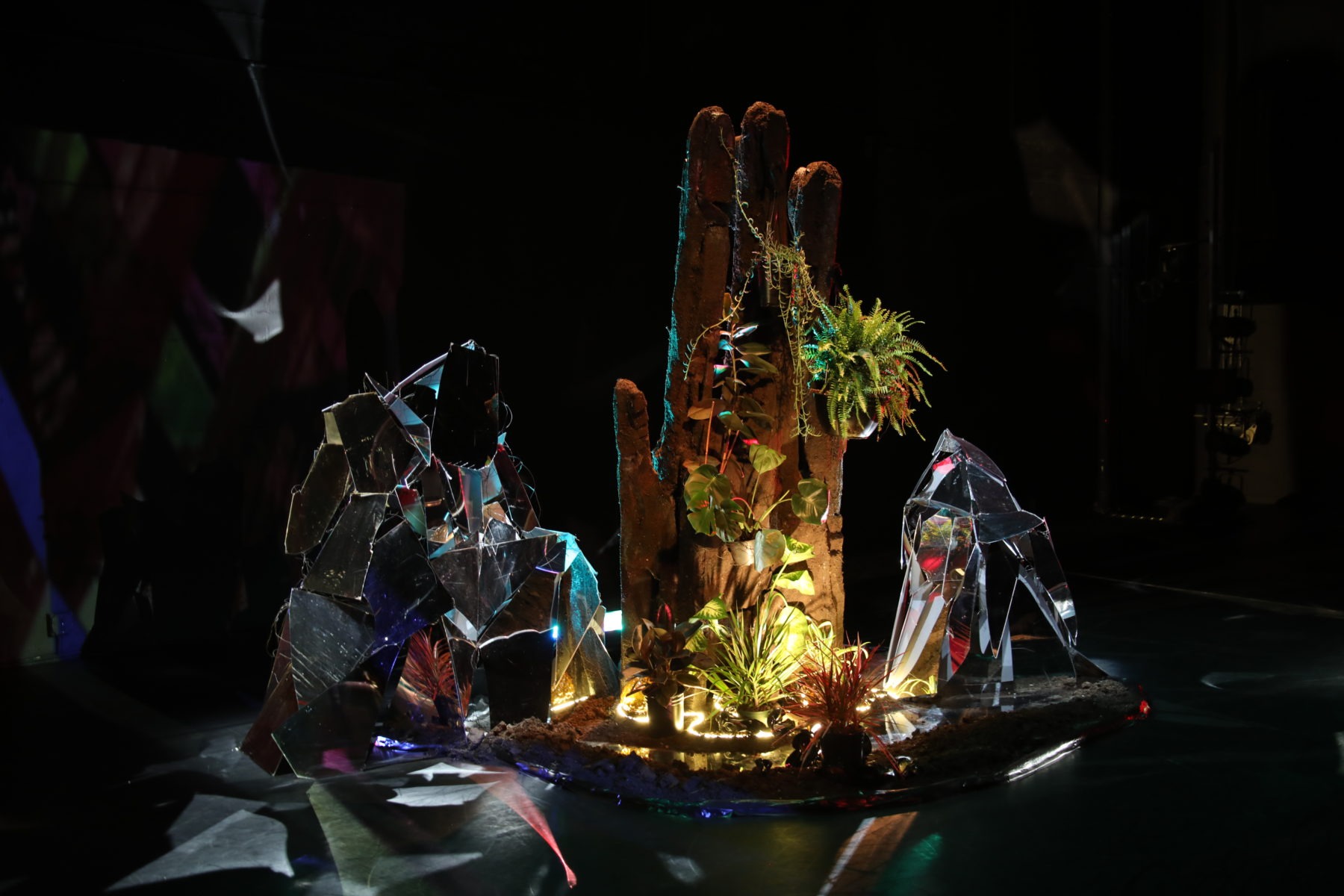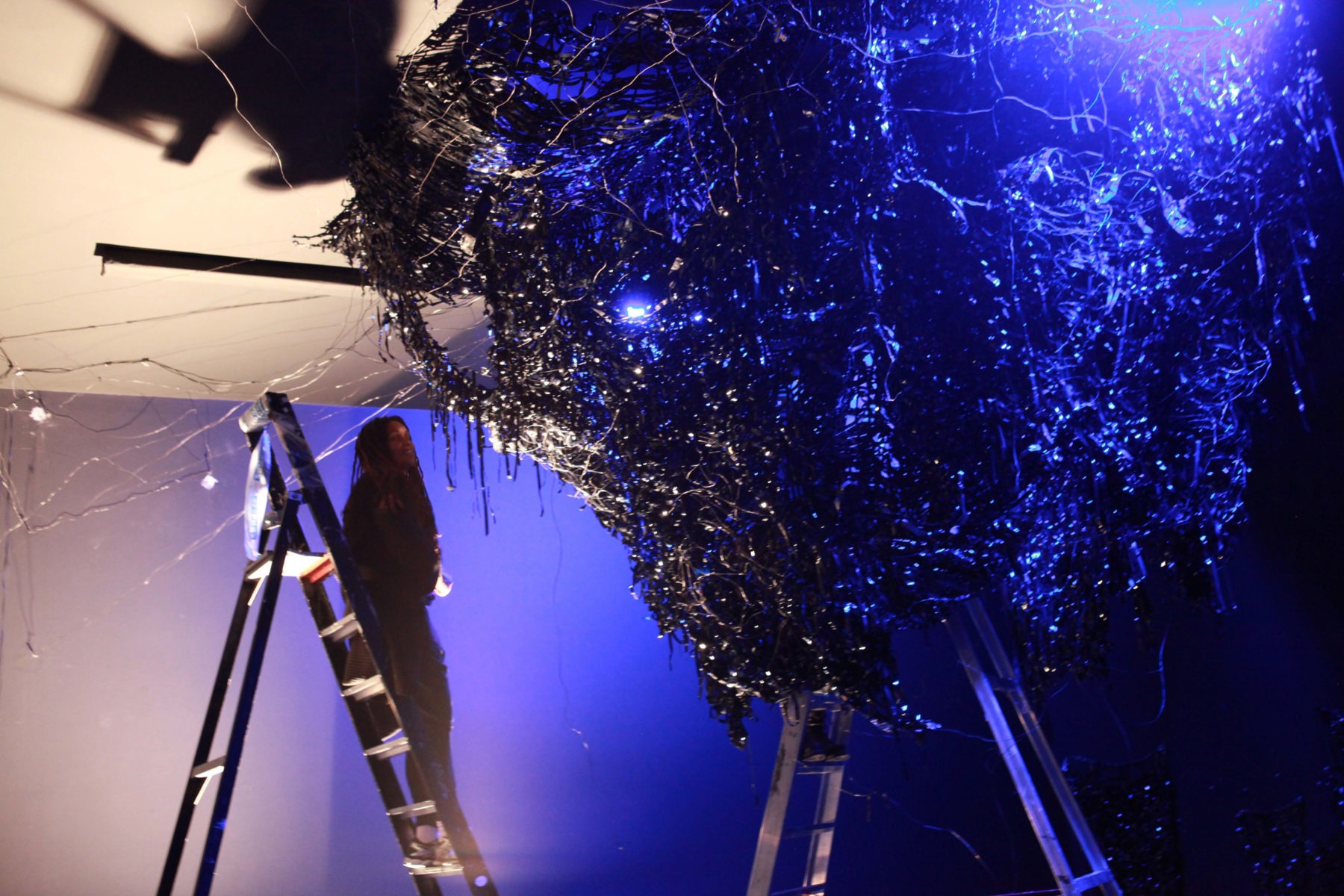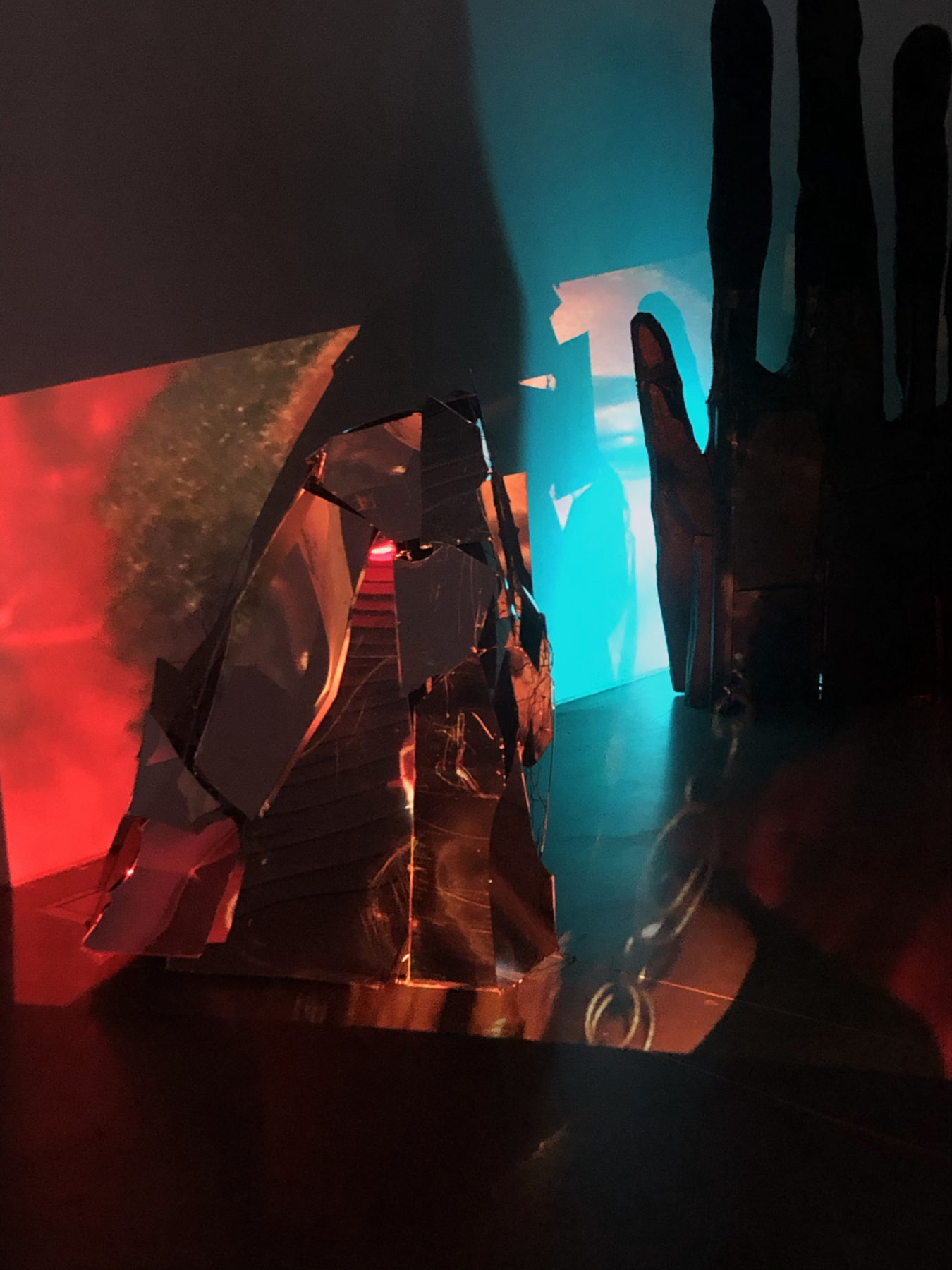
Jasmine Murrell is a weaver of histories, memories and loss. Her art work carries through times past and into the future what was lost, what was stolen, and what can never be replaced, a knowledge that is imprinted into the bodies of the older generation of Black women, an embodied knowledge.
Woven into layers of textile, skin, and typography Murrell’s artwork creates refractions through an aesthetic that presents multiple ideas at once.
During a recent conversation with exhibition curator Ingrid LaFleur, Jasmine Murrell conveyed her vision and inspirations that motivate her artistic expression. In describing her work, Murrell explains that she is “aesthetically drawn to the textures of the body and how it changes as a form of abstraction.” The work is a collaboration that represents not only her own history but also the memories carried through the bodies of the women who are featured in her work.
Murrell shuns the Western ideal of beauty as represented by youth, “the new, the young”. “The more things are aged, the more they become ripened. No one goes to look at a 15 year old tree. We may travel to look at a 200 year old tree,” she explained. For Murrell, older women are much more interesting aesthetically and figuratively. She feels that although they may seem invisible in today’s youth-obsessed society, they are living monuments of time and history and beauty. And she is honored to be able to incorporate their bodies and the textures of their bodies into her artwork through the mediums of technology and textiles.
I’m aesthetically drawn to the textures of the body and how it changes as a form of abstraction.
–– Jasmine Murrell


Two major works from 2019, ‘Walking time Travelers: Future will remind you of what is most important, what was lost, what was stolen, and what can never be replaced’ and ‘The Power source’ are featured in the ‘Futurisms’ exhibition.
In this body of work, Jasmine Murrell presents abstraction as expressed through the aging Black body. The tapestries are evidence of Black life woven into our future. Each tapestry calls to attention Murrell’s process. We see the final form of materials collected over 10 years. Among them are images of a Black female body, signaling that her wisdom must be central to our future.
It is a body of work that, according to the artist, represents the idea of the future as a representation of “an accumulation of things overtime,” an “embodied knowledge” that incorporates ideas of art, design, craft together as “hybrids”.

The human body as art, has always intrigued her, Murrell explained. Her projects have included collaborations with choreographers and dancers who embody art through their movements. Many of the women in her collaborations are retired performers, some of whom she’s known since childhood, when she first started creating clothing – wearable art, at the Detroit opera house.
Her collaborations take her to other dimensions as well. For example, a recent collaboration on projects on the topic of interspecies communication. These are stories of the history and diaspora of Black people communicating with plant life and other species. “We’ve been doing it even before it was needed and necessary because of the way that we’ve been so destructive to the planet,” she said. This has led to the creation of sculptures inspired by these themes, where she plays with the idea of “what is alive and what is really dead.” Intrigued and inspired by the stories of people such as George Washington Carver, an inventor, artist and scientist, Murrell explores human relationships with “living things”, as opposed to, say, machines, “things that are not alive”, which have characterized Western classical art.
_____
Caveat: This conversation has been redacted and edited for clarity from an artist interview with curator Ingrid LaFleur.


With ‘The Immortal Uterus’, Murrell wanted to create a space that is almost like cancer too, it changed shape and form with every exhibition, she explained. The weavings, comprised of over a thousand different quilts, were made by different weavers from all over the world, whose weaves were coded to communicate different meanings. For the artist herself, the collaboration and the weaving process of creating these collections was therapeutic and empowering.

Jasmine Murrell is a Brooklyn-based interdisciplinary visual artist who employs several different mediums to create sculptures, installations, photography, performance, land art and films that blur the line between history and mythology. In her exploration of the African diaspora and ancient craft techniques that bring life to mundane, seemly dead material, Murrell juxtaposes American artifacts with the products of other knowledge systems, troubling the historical record to reveal other truths and other narratives. Her work speaks to our subconscious of the sublime force created from oppressive conditions and the transformation of trauma.
She has exhibited nationally and internationally, in venues such as the Museum of Contemporary Art; the Bronx Museum; the Museum Contemporary Art Chicago; the Whitney Museum, the African-American Museum of Art, and the International Museum of Photography. Murrell has been a resident artist at the Bronx Museum AIM program; Baxter St. Gallery workspace; BRIClab contemporary art residency and Block Gallery workspace. Her work has been included in the book MFON: Women Photographers of the African Diaspora, The New York Times, Time Magazine, Hyperallergic, The Detroit Times, and several other publications.